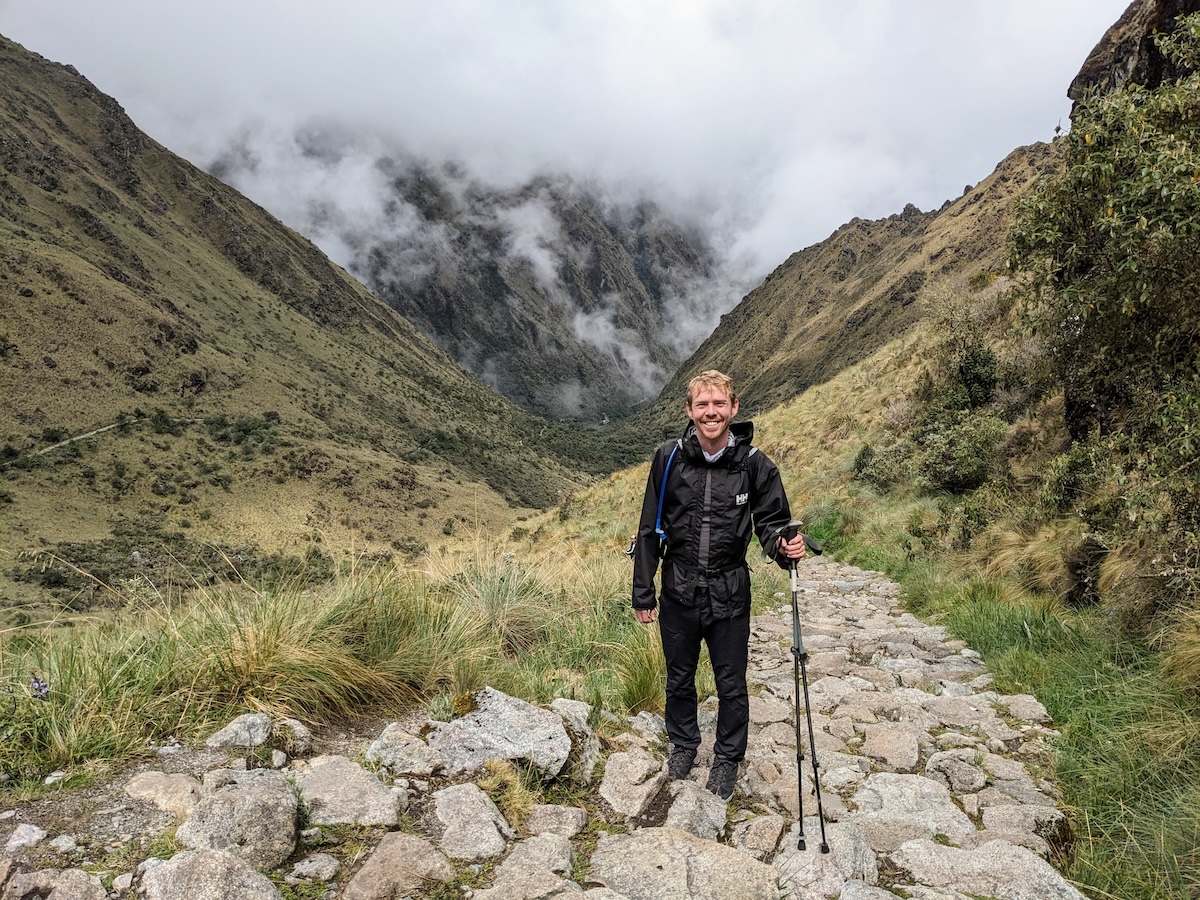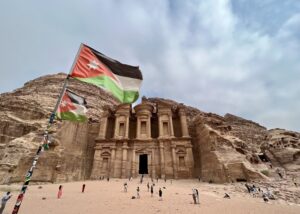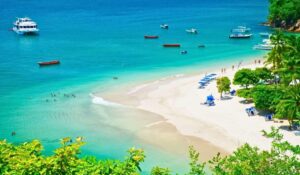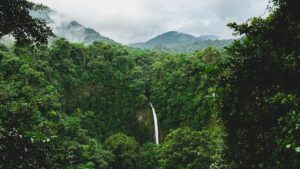Inca Trail Packing List
8 min readWarm days; chilly nights. Rain downpours; blazing sunshine. The Inca Trail has six different microclimates making the weather changeable and unpredictable. Packing for the Inca Trail is a challenge even for the most experienced travel packers due to changing weather and walking conditions. This Inca Trail Packing list is your comprehensive list of everything you
The post Inca Trail Packing List appeared first on Charlie on Travel.
Warm days; chilly nights. Rain downpours; blazing sunshine. The Inca Trail has six different microclimates making the weather changeable and unpredictable. Packing for the Inca Trail is a challenge even for the most experienced travel packers due to changing weather and walking conditions.
This Inca Trail Packing list is your comprehensive list of everything you need in your backpack for the Inca Trail. After we completed our trek on the classic 4-day Inca Trail trek, we have all the insider knowledge of what to pack (and what not to). We wish we’d had this packing list before our own hike!
You need to pack light for the Inca Trail. However, you don’t want to find yourself without essential kit — that can make your Inca Trail trek miserable. There’s an Inca Trail packing sweet spot and we’ll help you find it!
Before You Pack
Backpack Logistics
There are two options for the classic Inca Trail tour. The most common is where you have porters to carry your luggage. The other option is to carry all your own luggage.
For most hikes, there will be porters who will carry up to 7kg of your personal items in a separate duffel bag. This weight includes a sleeping bag and air matt which you can bring yourself or rent from the tour operator. These two items usually weigh 3.5kg, leaving you with 3.5kg for the rest of your items. Trust us, this is enough!
You will need to bring a backpack for the Inca Trail to use as your day pack. 20L is the max size you’ll want for the daypack so you’re not weighted down. You need space for 2-3L of water in the pack. Luke and I both carried 12L Camelbak daypacks with 2L water reservoir and they were fantastic.
Rainy Season vs Dry Season
Whilst the rainy season is more rainy and the dry season has less cloud coverage, the weather is unpredictable during both. You need to pack for both rain and shine whether you’re hiking in rainy season or dry season.
During the rainy season, we’re sorry to break it to you but you’re likely to experience heavy downpours at some point on your 4-day hike. You will need more rain gear than you think to make sure you stay “relatively” dry.
Inca Trail Packing List
Your Passport
You cannot enter the Inca Trail without your passport. At the Km 82 checkpoint where the Inca Trail trek starts, passports will be checked and verified along with your permit. Your tour company organises your permit, so you just need to remember your passport. You will also need your passport to enter Machu Picchu.
Unfortunately, you cannot bring photocopies and you must bring your original. You must also bring the same passport you used when booking the Inca Trail. Avoid booking the Inca Trail with an old passport if you know you will have to renew your passport before starting the trek. If you do have to, bring both passports.
Worried about it getting wet? Yeah, we were too. Bring a Ziplock bag or other waterproof cover for your passport. You don’t want to end up with soggy passport pages.
Hiking Boots
The quintessential piece of kit for the Inca Trail. You will need waterproof hiking boots. I’m serious — don’t be tempted to bring non-waterproof boots because you will find your feet squelching around and you will be miserable.
Make sure your hiking boots are comfortable too. Break them in before the Inca Trail because you don’t want any blisters or sore bits. We hiked in the Sacred Valley multiple times to before the Inca Trail to break in our boots and get used to the terrain and altitude.
Charlie wears the Lowa Womens Renegade GTX Lo Shoes. These were fully waterproof in the torrential rain and comfortable for the full hike. Note that the soles of these shoes are hard so I changed the insoles to softer ones beforehand. Luke wears Helly Hansen Men’s Switchback Trail Boots. Luke loved the comfort and fit of his boots.
You might be wondering why we both chose to wear low-top shoes when commonly it’s recommended to have high-top boots for long hikes. The simple first reason is to optimise packing space, as low tops take up less space. The second reason, is that whilst high-top boots are thought to give better ankle support, this is not necessarily best for everyone. If you get sore ankles in high-tops (like I do) then it’s better to wear low-top boots as they allow more flexibility and rotation for your ankle.
Do not wear trainers on the Inca Trail. A few people in our group did this and had sore, wet and cold feet. Big mistake.
Inca Trail Clothing
You’ll need to be a considerate packer to get the right clothing in your backpack. Too little clothing, and you’ll end up damp and cold. Too much clothing and you’ll be carrying excess. Remember that you will re-wear some items too.
We recommend the following:
- 1 x waterproof rain coat with hood (we swear by our lightweight Helly Hansens)
- 1 x fully waterproof rain trousers (they may not be fetching but you’ll be so glad you have them)
- 2 x fleece (Ayacucho for Charlie, Craghoppers for Luke)
- 4 x t-shirts for hiking. We recommend long sleeves if you’re hiking in the dry season as there’s little cloud coverage and during September when there are lots of mosquitos. Bring hi-wicking fabrics as cotton can get sweaty.
- 1 x t-shirt to change into at camp
- 1 x warm top to sleep in (I recommend a merino wool one)
- 1 x beanie for the cold nights
- 1 x cap — yep you need both because sometimes it’s cold and sometimes it’s sunny
- 1 x pair of lightweight hiking leggings (Charlie wears LNDR) or trousers (Luke wears these)
- 1 x pair of lightweight shorts
- 1 x warm jogging bottoms (fleece-lined are best) to sleep in at camp. Do not wear these on the hike! They will absorb water and make you sweat. You could bring merino base layer bottoms instead.
- 4 x hiking socks
- 5 x underwear (add a space in case you get really soaked)
- 1 x sports bra (I love Girlfriend Collective for good support and no slips)
- 1 x pair of sunglasses
- 1 x plastic rain poncho. It goes beautifully with the rain trousers. Most tour companies will give you one of these at the start of the trek and it’s useful in heavy rain for extra waterproofing and to keep your backpack dry.


Toiletries
There are two options on the Inca Trail: freezing cold showers or no showers. By the time you reach camp, it’s usually quite chilly and for many (us included) the thought of a cold shower is highly unappealing. The shower blocks are very basic and not cleaned that regularly, making it additionally unappealing. Some of our group braved the cold showers on the third night’s camp, which has the cleanest facilities due to being close to the end of the trail.
- 1 x toothbrush
- 1 x toothpaste
- 1 x sunscreen (we love Sun Bum)
- 1 x lip balm with SPF
- 1 x deodorant
- 2 x roll of toilet paper (IMPORTANT: do not forget this because toilet roll is not provided on the trail or at campsites. Whilst 1 roll is enough, I’d personally play it safe and take 2 in case anything unforeseen happens).
- 1 x travel hand-sanitiser
- 1 x insect repellent
- 1 x box of blister plasters
- 1 x pack of paracetamol
- 1 x pack of diarrhoea tablets (juuust in case because you really don’t want to be dealing with this on the hike).
- 1 x pack baby wipes. Get biodegradable ones if you can, as the plastic content of standard ones is so high that they pretty much never decompose. These are handy to have if, like us, a cold shower is not for you.
- 1 x quick-dry towel if you do plan to brave the showers.
Other Must-Haves
- Water reservoir. We mentioned above, make sure you have a water reservoir enough to carry 2-3L of water per day. Our Camelpak backpacks had a built-in reservoir. Others brought a reusable water bottle but we didn’t find it necessary as we had our Camelbaks during the hike and at meal times cups are provided.
- Packing cubes. We always use packing cubes and they made packing for the Inca Trail much more efficient. They compress your kit down and you can segment your stuff so it’s easier to find when you unpack in the tent.
- Head torch. I hate to break it to you, but there are a lot of before sunrise starts on the Inca Trail. On the last day, you’ll be starting around 3AM. Some of the toilet blocks also don’t have good lighting, so you need a head torch to use the bathroom in the evenings and early mornings. Trust us, it’s easier to be hands free so head torch > standard torch.
- Power bank. There’s no electricity or charging points on the Inca Trail. If you’ll be using your phone or camera for photos, a power bank is recommended to recharge. You don’t want to run out of juice before Machu Picchu!
- Money. There are no card machines along the Inca Trail so you’ll need cash to see you through. There’s the opportunity to buy snacks on the first day and you’ll want to bring money for a tip. We’ve detailed how much to bring in our Inca Trail Hiking Guide.
- Plastic ziplock bags. Whilst we dislike single-use plastics, if you’re hiking in rainy season you need all your kit to be inside waterproof bags. The easiest way to do this is to buy a couple of different sizes of ziplocks. We packed everything into ziplocks and it worked a treat.
- Snacks. You’re fed well on the Inca Trail but mealtimes can be 4-5 hours apart or longer depending on your hiking time. The tour companies provide snacks such as biscuits and fruit, but we recommend bringing some of your own. Energy bars and nuts are particularly handy to have.
If you’re preparing for the Inca Trail, read our Complete Guide to Hiking the Inca Trail to Machu Picchu.
Discover more from Slow Travel News
Subscribe to get the latest posts sent to your email.



